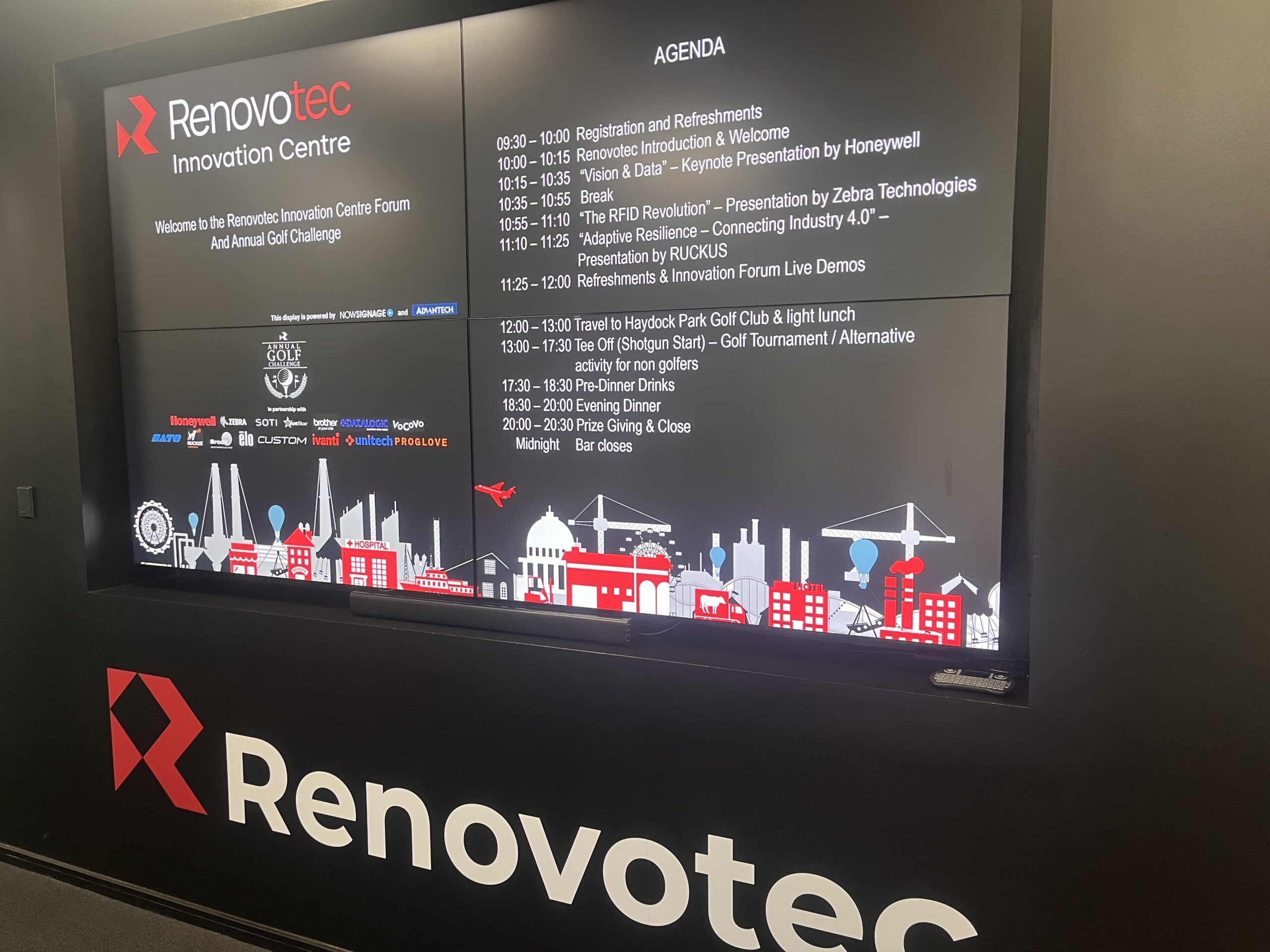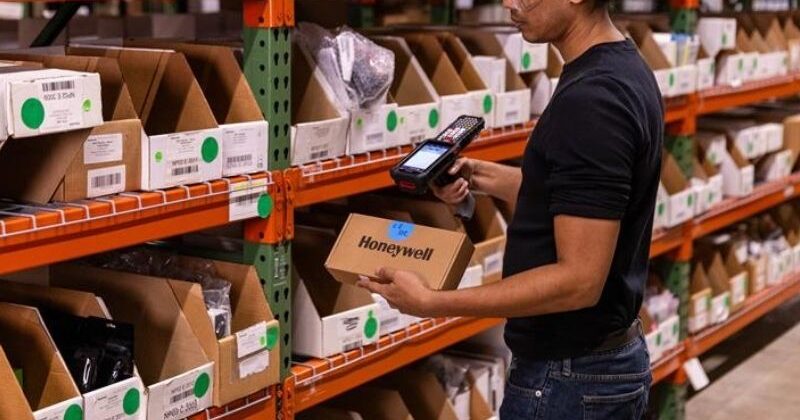

Why are Machine Vision and AI a Powerful Tool for the Supply Chain?
In this blog we address questions such as what is machine vision, what are some of its uses and how it is revolutionising the supply chain.
Innovative technologies such as analytics, robotics, AI, and machinery have become must-have innovative solutions for businesses who want to improve their operational efficiency, boost productivity, and provide them with a winning edge.
According to the Zebra Global Warehousing Vision Study, 87% of companies agree that these new technologies are essential to be competitive in the modern, on-demand economy.
One such technology is Machine Vision (MV) that uses robotics technology to enhance warehouse automation. Providing better accuracy, efficiency and productivity. Whilst also freeing up workers from repetitive tasks, reducing overheads and minimising human errors. These ground-breaking solutions can streamline business operations and help them stand out from the competition. Used alongside the newer AI technologies, Machine Vision can be a game-changer for your business.
In this article, we will explain first explain what machine vision is, how it works and how it can be used in the supply chain. Then we’ll turn our attention to AI and explain how it can be a powerful tool that further enhances the unique advantages of this incredible technology.
What is Machine Vision?
Machine Vision refers to the technology and processes used to enable robots and computers to visually perceive and interpret their surroundings. They use advanced imaging techniques like cameras, sensors, and imaging processing algorithms to mimic the capabilities of human vision. Thus allowing them to be used to enhance business processes.
This means that machines can perform tasks that require visual inspection or analysis. Such as extract meaningful information from images or video streams and use it to make intelligent decisions.
Here’s how it works:
Information capture
Cameras or sensors capture visual data from the environment. By using sensors, cameras, and scanners.
Image processing
Before these images can be analysed, they are first processed to improve quality, remove noise, correct distortions, and adjust light quality.
Information analysis
Advanced algorithms analyse the captured images to extract relevant information. For instance feature detection, pattern recognition, edge detection, colour analysis and motion tracking.
Decision making
Using this information, this machine vision can make decisions. Such as sorting objects, controlling robotic movements and triggering alerts. As well as providing automated feedback to other systems.
This technology is revolutionising manufacturing, coordination and supply chain management. As it can be used for goods in/goods out, quality inspection, picking and packing, health and safety and even security.
Because it can perform tasks quickly, accurately, and often faster and more precisely than humans, it can help reduce errors. In addition to enhancing product quality, improving efficiency, and optimising your overall operations.
How AI is enhancing machine vision technologies
Thanks to the rapid advances in technology and the widespread adoption of AI, there are now two types of machine vision. Firstly rule based MV, and secondly AI-based MV.
Rule-based MV
Rule-based MV uses predefined rules and algorithms to analyse visual data and make decisions. These are usually programmed by humans based on their knowledge and understanding of the industry, environment and how they will be used.
Well-established in the supply chain, they are excellent tools when the environment remains consistent and well-defined. They can handle simple, repetitive tasks with a high degree of accuracy. However, in more complex or varying environments, they can be less effective because of their lack of flexibility. Thus if changes need to be made, manual reprogramming is usually required.
AI-based MV
As the name suggests, AI-based MV uses AI algorithms like deep learning to perceive the environment and make decisions.
Hence, they don’t need explicit programming and can handle complex environments and adapt to new situations. They also use unstructured data to complete tasks. This means that they excel in environments with high variability. For instance, in warehousing.
Although they can be more complex to set up because of the computational resources and extensive data labelling required, they soon become an outstanding asset for any supply chain or warehousing operation.
How can MV benefit warehousing and logistics?
Machine Vision drastically optimises supply chain operations in countless ways. Adopting this technology offers many potential benefits, including:
Increase read rates
Machine vision technology can accurately capture and interpret data from barcodes, labels and other identifiers on products or packages. Using high-speed cameras and advanced image processing algorithms, it improves efficiency and boosts speeds while reducing errors.
Redistribute staff to more complex tasks
With MV, robotics and automation technologies in place, your team members don’t need to work on repetitive, time-consuming tasks anymore. This provides excellent growth opportunities to your team and helps boost their level of job satisfaction.
Track assets throughout the warehouse
The real-time visibility provided by MV means that businesses can better capture data and track the movement of assets. This reduces the need for manual checks and human error.
Optimise reverse logistics
Machine vision makes it easier to perform reverse logistics, making it easier to identify, sort and inspect returned products. Additionally, it ensures the conditions of items are properly assessed, sorted, and processed, without the need for human input.
How AI enhances MV
While machine vision technology does provide outstanding improvements for the supply chain, it’s enhanced by the integration of AI.
This removes the need for reprogramming and allows them to adapt, learn and make intelligent decisions. AI algorithms also enable machines to learn continually, meaning that their performance continues to improve over time.
If companies can leverage AI, their MV systems will further enhance automation, accuracy, and agility. This enables fulfillment businesses to gain a competitive edge, reduce costs and streamline their business processes.
You can get hands-on experience with these new technologies by visiting our new Renovotec Innovation Centre (RIC) near Warrington.
The RIC is a state-of-the-art facility where customers can experience the latest hardware and software innovations in person. It features technology zones for retail, warehousing, healthcare and much more.
Summary
Machine vision has become a powerful tool in transforming the supply chain, especially when coupled with advanced AI technology.
From quality control to picking and packing and inventory management, Machine Vision has countless positives. It can streamline business processes, optimise productivity and much more. Businesses are fast adopting these technologies and you can’t afford to be left behind.
Renovotec can optimise your warehousing using machine vision, automation and AI
Contact one of our experts today to find out more about our robotics, automation and AI solutions or visit our new innovation centre.
Related Blog Posts

3rd Annual Innovation Forum and Golf Day
Last week saw the highlight of the Renovotec calendar; our 3rd Annual Innovation Forum and Golf Day.
Hosted at Renovotec’s first of its kind Innovation Centre in Newton-Le-Willows, the morning event brought together the Renovotec team, partners and clients to showcase the latest RFID and logistics tech, hear about the latest trends from Industry experts and experience […]
Retail Experts Share Top E-Commerce and Logistics Trends for 2025
Faki Saadi, Director of Sales UKI at SOTI and Richard Gilliard, Managing Director at Renovotec, explore the key trends shaping the future of the retail supply chain From Asda rolling out electronic shelf labels to Amazon launching ‘Prime Air’ a delivery drone service, retail brands are evolving and looking to the latest technologies to keep […]

Upgrading the supply chain with Honeywell voice and mobility solutions
How can you transform your supply chain operations and ensure competitiveness in the market with voice and mobility solutions from Renovotec and Honeywell?
Improving productivity and efficiency gains are vital for the profitability of businesses in the supply chain.
